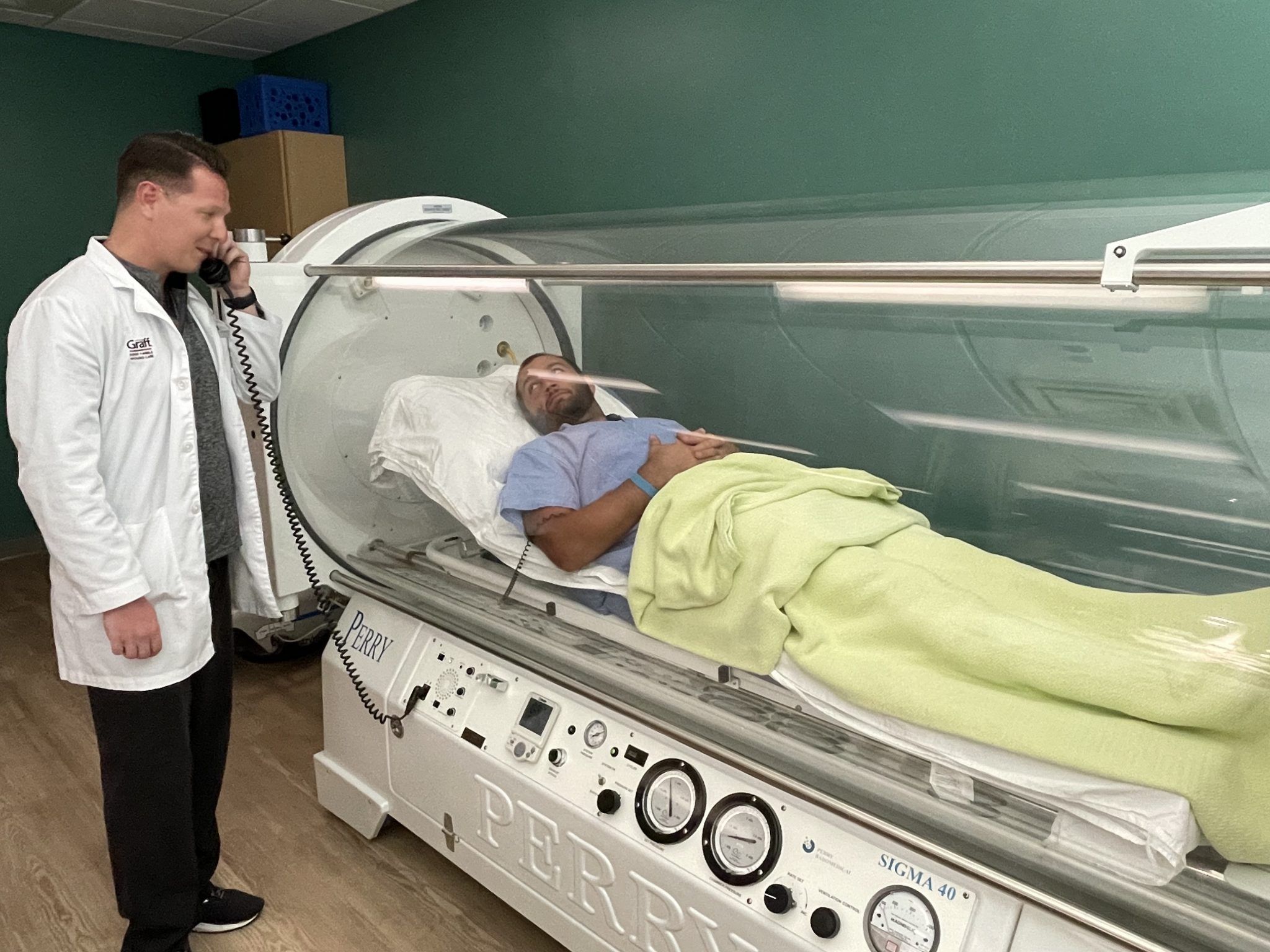Clostridia Myositis and Myonecrosis (Gas Gangrene) is an acute, rapidly invasive infection of the muscle characterized by profound toxemia, extensive edema, massive death of tissue and variable degree of gas production.
The diagnosis of gas gangrene is based on clinical data supported by the demonstration of Gram-positive rods from the fluids of the involved tissues as well as a virtual absence of leukocytes. Culture results are unpredictable while sialidase immunoassays may allow accurate identification of the Clostridium species.
Tissue gas seen in a feather-like pattern radiologically, associated with crepitus, is an early and characteristic sign. An associated thin serosanguinous exudate with a sickly, sweet odor associated with disproportionate pain is essentially diagnostic.
The onset of gangrene can occur one to six hours after injury and presents with severe and sudden pain at the infected area.
The goal of Hyperbaric Oxygen Therapy (HBOT) is to stop alpha-toxin production, requiring tissue oxygen concentrations of 250 mm Hg, to inhibit further bacterial growth, at which point the body can use its own host defense mechanisms.
HBO treatment starts as soon as the clinical picture presents and is supported by a positive Gram stain. The greatest reduction in mortality results from treatment utilizing HBOT, antibiotic therapy and surgery. Debridement of necrotic tissue can be performed between HBO treatments when clear demarcation between dead and viable tissue is evident.

The usual treatment consists of Oxygen administered at 3.0 ATA pressure for 90 minutes three times in the first 24 hours. Over the next four to five days, treatment sessions twice a day are usual, for up to 15 sessions. The actual decision for termination of therapy is dependent upon the patient’s response to HBO therapy.
When it comes to HBOT therapy, trust the experienced certified-technicians and multi-disciplinary physicians at Baromedical Associates to provide you with the most advanced treatment—in your own private space.